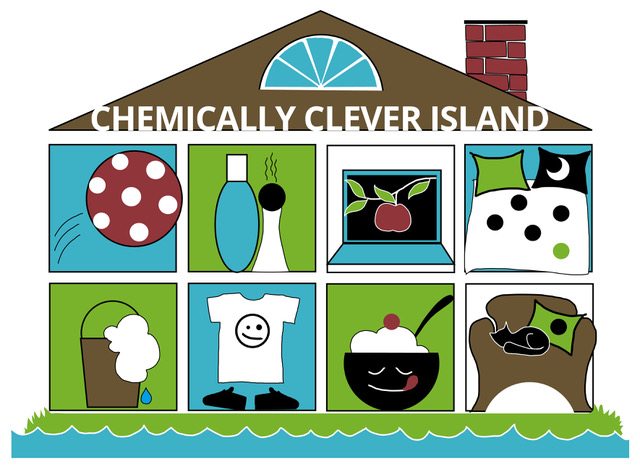Think lifecycle
Choosing building materials
When it comes to building materials, it’s neither just the construction process nor just the finished building that counts. Think lifecycle for sustainable and chemically clever choices
PRODUCING BUILDING MATERIALS
Wood is a renewable resource with its own form and structure. No industrial chemicals are required (except for refined products, as when residues are added together with large amounts of glue in boards, or when fast grown porous wood is impregnated for outdoor use).
The emissions of carbon dioxide from the framework of a concrete house is 10 times bigger than from a corresponding framework of wood. Concrete, mineral wool, paints, solvents and plastic building materials often contain toxic chemicals, hazardous for people and the environment from the very production phase.
TRANSPORTS
Seashells are chemically clever insulation – in Denmark where they are near at hand. Real sustainability requires local materials, minimizing transports and thereby saving natural resources and emissions. Wooden and textile fibers are getting available in more and more clean versions.
Read on paint cans and packages! If the paint is made in China, the bulky cans have travelled a long way. Besides problematic aspects like climate impact and emissions, the paint needs to stay fresh and keep the right texture for a long time. That requires a lot of additives.
CONSTRUCTION
Is the person building the house breathing in the emissions and the dust from the building materials at hand? Natural materials like wood, stone, straw and linen, as well as paints made of gentle color pigments, solvents and adhesives, are often both environmentally friendly and healthier to handle.
Ordinary plastic based paint may contain everything from preservatives, anti-moulds and solvents to endocrine disruptive softeners. Many professional painters get affected by allergies and other health disorders. Mineral wool and glulam discs are also unhealthy to work with.
THE USE OF THE HOUSE
The healthiest house is built of materials that breathe, and interact with moisture and temperature inside and outside the house. It also contains a minimum of synthetic building chemicals. Wood and other natural materials create the best indoor climate.
Most people spend 90 percent of their time indoors. Often, the air indoors is more contaminated than outdoors, mostly due to foreign substances emitting from the building materials. Children are especially sensitive. Save them from vinyl flooring and fresh paint!
ENLARGING/ SHRINKING/ TEARING DOWN
In old wooden or stone houses, large amounts of the material can be made use of of and reused. Deliberately choose materials and construction methods favoring either reuse or recycling: Materials that decompose in nature without spreading hazardous chemicals to the air, the land or the water.
About 27 % of the total amount of waste in Sweden comes from the building trade, as well as almost 40 % of all hazardous waste. Constructional engineering of today creates waste where different raw materials are difficult to separate. When reconstructing or tearing down a house, most of the consumed material end up on the dump.
